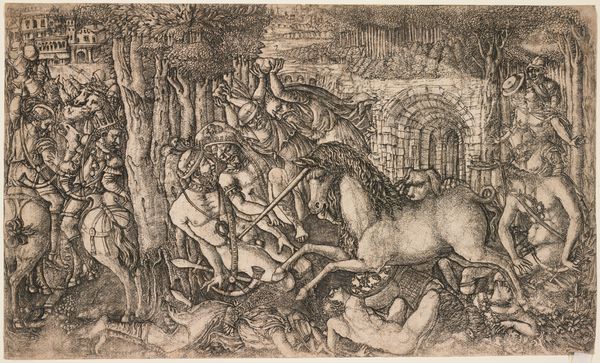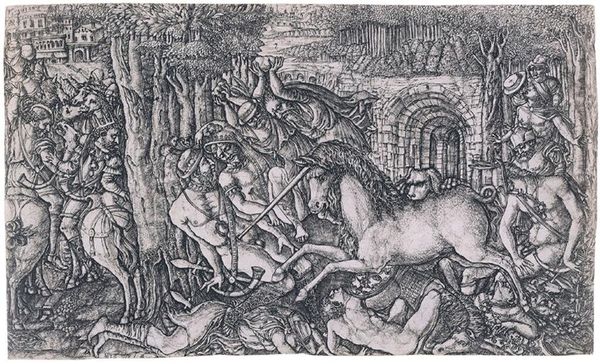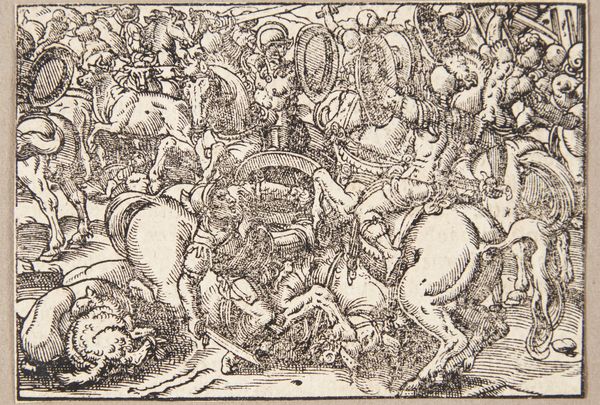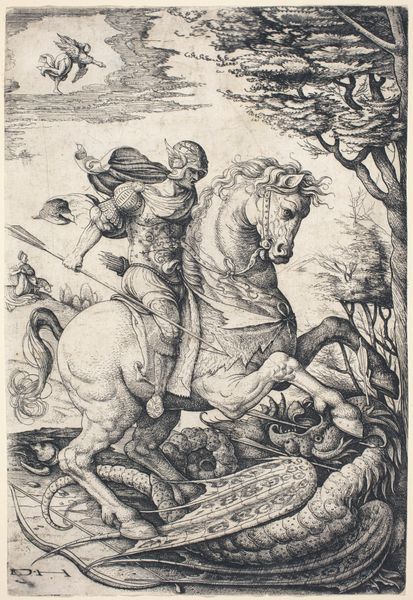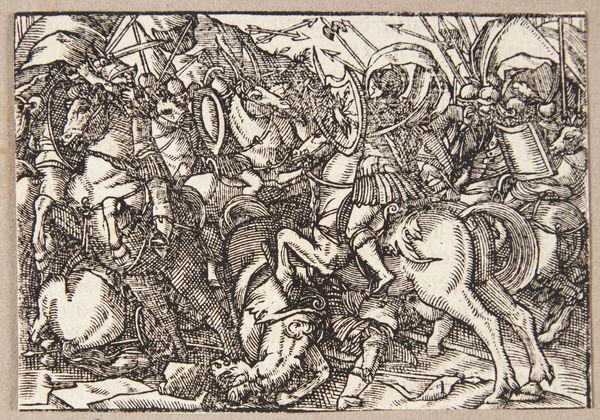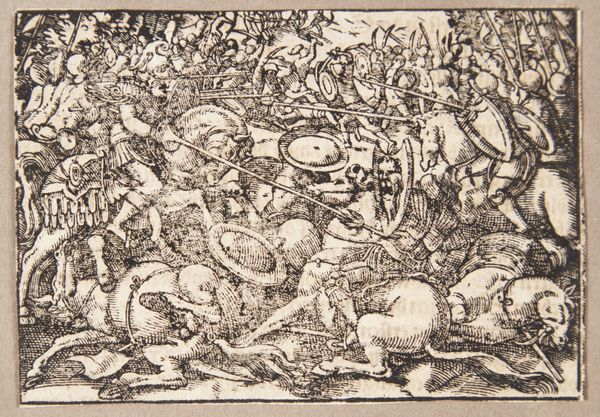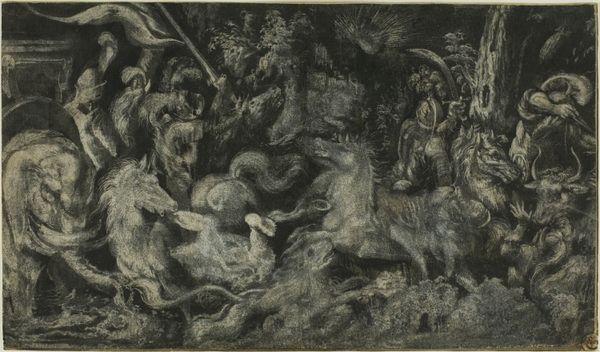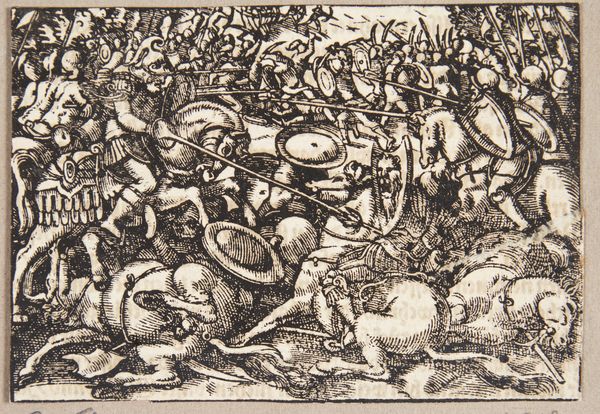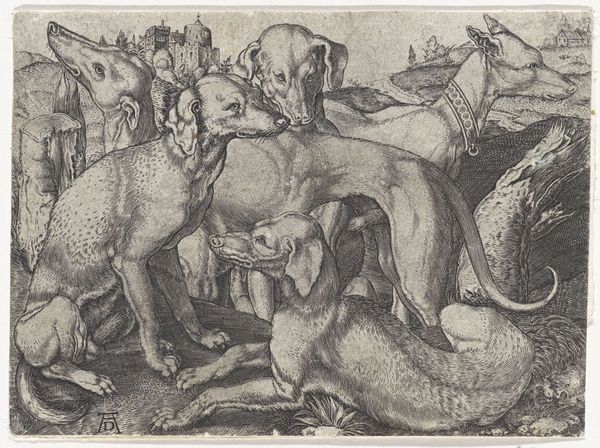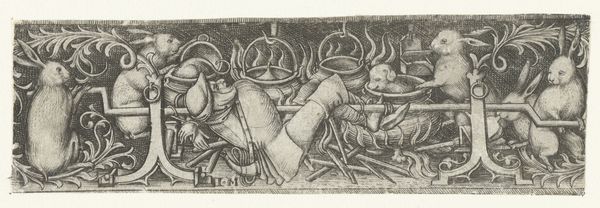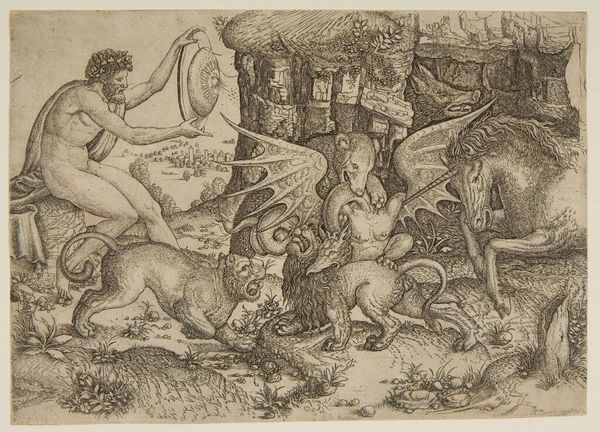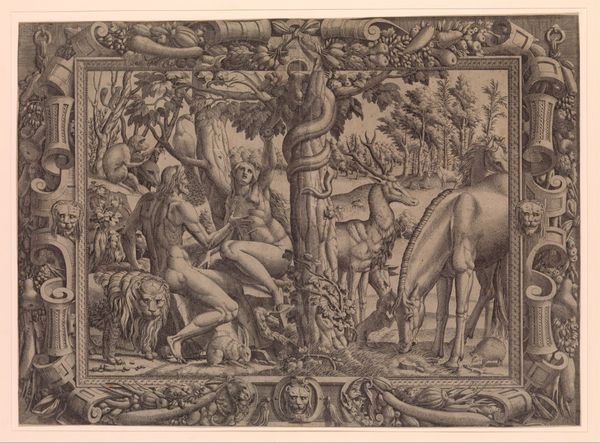
drawing, print, etching, paper
#
drawing
#
medieval
# print
#
etching
#
paper
#
11_renaissance
Dimensions: 300 × 395 mm
Copyright: Public Domain
Curator: We are looking at “A King Pursued by a Unicorn,” an etching on paper made between 1550 and 1560 by Jean Duvet. It resides here at the Art Institute of Chicago. Editor: The density of the marks is just striking! You're plunged right into the thicket, into the fray, really. I see figures wrestling and fleeing; a kind of wild energy almost bursting from the frame. Curator: Duvet’s work, particularly this piece, is laden with symbolism. The unicorn, often interpreted as a symbol of purity and grace, takes on a darker connotation here. The king, seemingly a figure of authority and divine right, is vulnerable, pursued not blessed. It speaks volumes about the shifting power dynamics of the Renaissance, the anxieties creeping into established orders. Editor: I’m more focused on *how* Duvet got that density with the etching. Look at the line quality, the varying depths. I wonder what acids and grounds he used, and the number of passes. It really gives a tactile quality to the chaotic scene. And the way the plate was printed would change how it all felt at the time; the economics of distribution shaped how widely Duvet's views were known, after all. Curator: The architectural ruins also resonate deeply, beyond the technique that produced it. These aren't simply backgrounds; they symbolize decaying empires, the ephemerality of power and mortal achievement. This speaks to the timeless tension between spiritual aspiration (the unicorn’s implied presence) and earthly power, here depicted as always teetering on the edge of collapse. Editor: Agreed, it all loops back to craft itself; that act of repetitive and calculated application of acid to metal mirrored the patience expected of the laboring masses and speaks volumes about Duvet’s view on social constructs, on making value, during this crucial transition in Europe's economic history. How power shifts change not only *who* profits but *how* we conceive of it. Curator: Ultimately, I feel it gives me hope because what seems eternal isn’t, especially bad authority. It shows human striving while knowing full well its vanity. A mirror to then, and also to now. Editor: For me it brings to mind, that something made laboriously by hand like this, had it roots embedded with others facing constant disruption...It's both sobering and oddly inspiring to me.
Comments
No comments
Be the first to comment and join the conversation on the ultimate creative platform.
